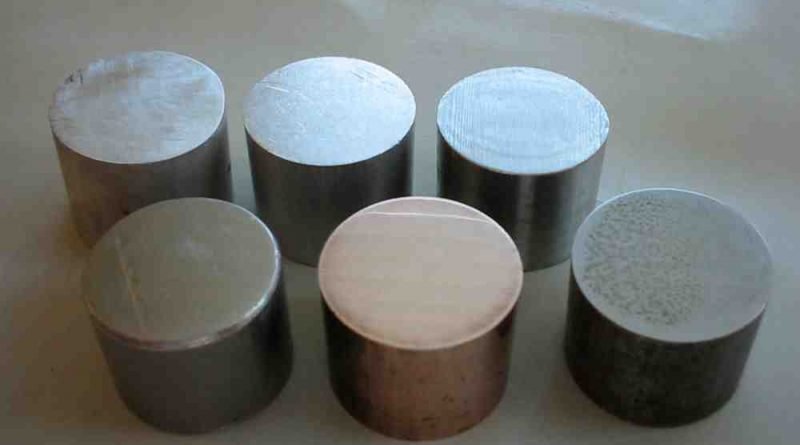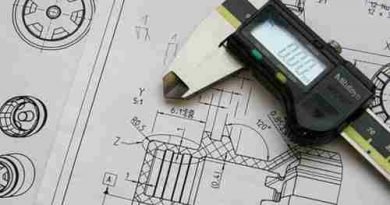Non-Ferrous Metals and Alloys
Copper and Copper Alloy:
Metallic materials can be divided as two large groups. Ferrous metal and Non- Ferrous metal. Ferrous metal contain iron based, a non- ferrous metal does not contain iron based some of them then other like as the principle of their constituents.
Properties of Copper and Copper Alloys:
Some of the properties of Copper and Copper alloys are,
- It has the property of ductility and malleability.
- It has very good conductor of heat and electricity.
- This is corrosion resistant.
- It has non- magnetic.
- It improves machinability.
Applications of Copper and Copper Alloys:
Some of the applications of Copper and Copper alloys are as follows,
- It can be used to making utensils due to good conductor of heat.
- It can be used in industrial applications.
- It can be used to making electric wires.
- It can be used to making bolts, rivets, pump parts, etc.
Muntz Metal:
It contains 40% zinc and remaining copper. The alloy becomes single phase at about 700ᵒ C. However, it can be readily hard worked and it is rolled in the 600ᵒ C to 800ᵒ C.
Applications of Muntz Metal:
Some of the applications of Muntz Metal are as follows,
- It is used to making bolts rivets, etc.
- It can be used to making utensils due to good conductor of the heat.
- It can be used to fitting pump parts, etc.
Naval Brass:
It contains 40% zinc, 59% copper and 1% tin, to makes a naval brass. It increases corrosion resistance to marine environments. This brass is also known as tobin bronze.
Applications of Naval Brass:
Some of the applications of Naval Brass are as follows,
- It can be used to making hardware of fitting in a marine environment.
- It can be used to making bolts and rivets.
Gun Metal:
It contains 10% tin and 2% zinc acts as a deoxidizer of fluidity of melt in improves.
Properties of Gun Metal:
Some of the applications of Gun Metal are as follows,
- It can be used for gun barrels and ordnance parts.
- It can be used for marine casting.
- It can be used in gears, bearings, valves bodies and similar applications.
Bronze:
A bronze is an alloy of copper than zinc. Zinc is in very small amount. Bronze are classified as follows,
- Aluminums bronze.
- Barium bronze.
- Silicon bronze.
- Tin bronze.
Aluminum and Aluminum Alloys:
Aluminum alloys are extensively used due to their increase’s strength. Because of their lights weight, they are more demanded in commercially applications. Aluminum alloys are classified as,
- Y- alloys.
- Duralumin.
- Aluminum casting.
- Wrought alloy.
Properties of Aluminum:
Some of the properties of Aluminum are as follows,
- It is light in weight.
- It is corrosion and wear resistance.
- It is a good conductor of heat and electricity as compared to copper.
- It has the property of ductility and malleability.
- It has soft metal as compared to other.
- It has very good thermal conductivity.
- It has shock proof.
Applications of Aluminum:
Some of an applications of Aluminum are as follows,
- It can be used to making electric wires, cables due to very good conductor of electricity.
- It can be used to making air craft parts.
- It can be used for food packaging.
- It can be used for wrapping the chocolates of food and stuff.
- It can be used for electric conductors and wires.
- It can be used to making utensils.
Aluminum Alloys:
For engineering applications, aluminum alloys can be used and due to their light weight, it can be more demanded in commercially and engineering applications. There are many aluminum alloys such as Cu, Ag, Mn, Sn, Mg, Tn, Si, etc. Some of them as follow,
Y- Alloys: It is an aluminum alloy containing 4% copper, 2% nickel and 1.5% magnesium. it is corrosion resistant. it is ability to retain strength. It has easily casting and rolled. It has good strength. It can be used for pistons and cylinder heat of diesel tanks and petrol tanks.
Duralumin: It has hard alloy of alloy of aluminum contain 4.5% copper and 1.5% magnesium. It is corrosion and wear resistance. It has Good Ability of Strength. It has hard as compared to other alloys of aluminum. It can be used to making air craft parts and airplanes due to their light weight.
Bearing Materials:
A bearing material are required in construction of machining angular any other part of equipment that requires a motion of rotation or reciprocation. A bearing material parts are design to transmit a load. It is knows as bearing materials.
Bearing material can be classified as,
- Sliding bearing.
- Rolling bearing.
- Thrust bearing.
Properties of Bearing Materials:
There are some properties of bearing materials as follows,
- It has high compressive strength.
- It has corrosion resistance.
- It has hand and wear resistance.
- It has very good mechanical property.
White Metal Alloy:
White metal alloy is also now as Babbit. There two types of Babbit,
Lead based babbit: It contains 80% lead 10% antimony and 10% nickel
Tin based babbit: It contains 90% tin 5% antimony and 5% copper.
Properties of Bearing Materials:
Here are some of the properties of bearing material as follows,
- It has high compressive strength.
- It has high handless and wear resistance.
- It has antiseizure structure.
- It has the property of brittleness and toughness.
- It has good corrosion resistance.
- It has good thermal conductivity.
- It has the property of oil retaining.





